Try Default

See how revenue teams automate revenue operations with Default.

Key Takeaways
- Default – Best for RevOps teams ready to consolidate their GTM workflows into one platform. Automates lead routing, enrichment, and scheduling. Standout for high-volume, high-velocity sales teams.
- Apollo – Ideal for outbound-heavy teams looking to scale prospecting. Offers robust lead sourcing and sequencing. Best for SDR-first orgs targeting cold outreach at scale.
- Chili Piper – Great for teams needing streamlined inbound scheduling. Prioritizes speed-to-lead. Best for booking qualified demos straight from your site.
Gong – Built for leaders optimizing sales performance through conversation intelligence. Best for insight-driven sales coaching and forecasting.
Most sales stacks are a Frankenstein of duct-taped tools—built fast, not smart. But tool sprawl is a silent pipeline killer.
The fix isn’t adding more software. It’s picking the right ones—built for scale, speed, and real ROI.
In this guide, we’ll show you the exact platforms top RevOps teams use to reduce lead leakage, boost rep productivity, and shorten time-to-revenue. Whether you’re consolidating systems or scaling outbound, this is the blueprint.
Below, you'll find a comparison table that summarizes all the tools we cover—so you can scan fast and go deep only where it matters to you.
Default: Best all-in-one sales tech stack
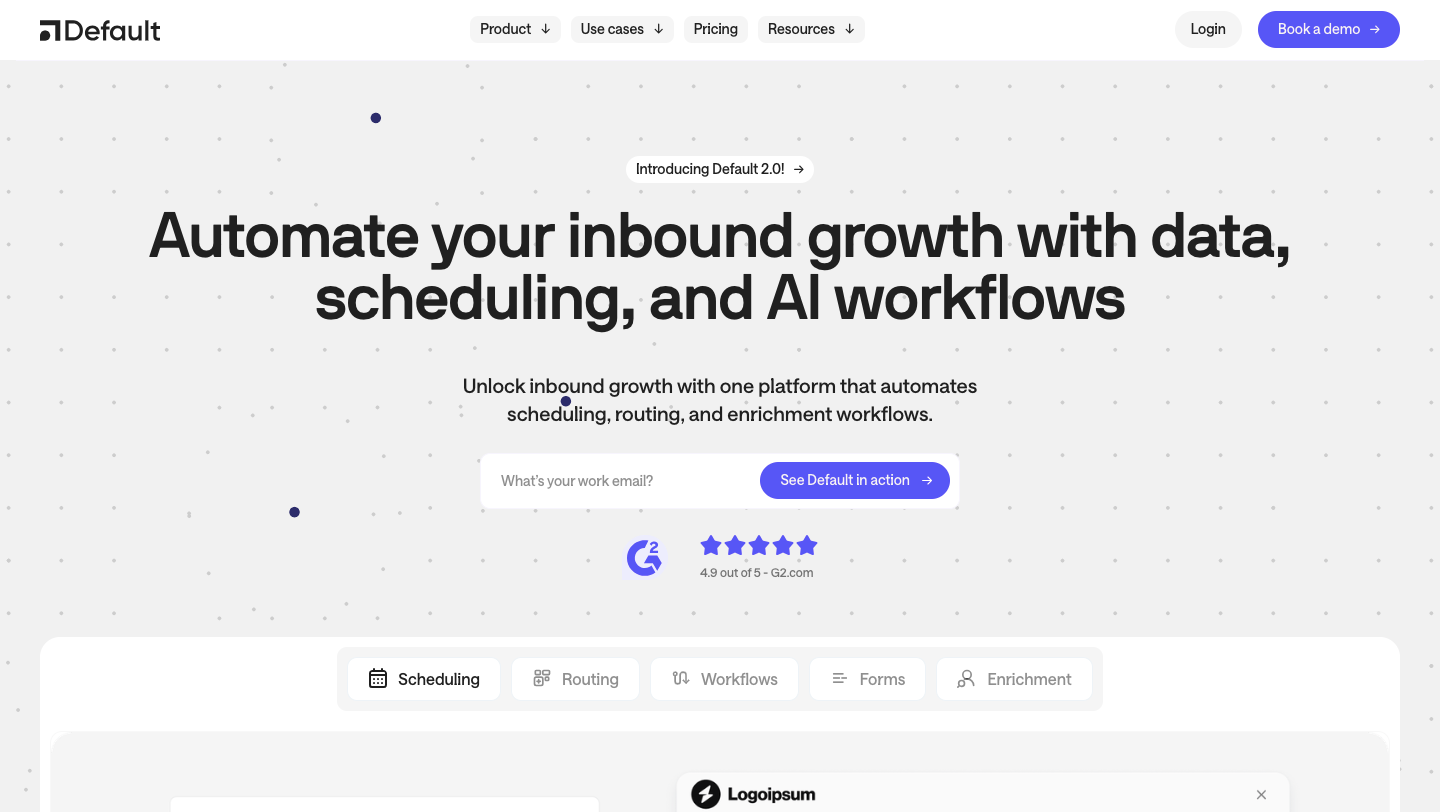
For GTM teams tired of stitching together point tools for lead routing, enrichment, and scheduling—Default consolidates the entire flow into a single, operator-grade platform built for RevOps.
Instead of relying on fragile workflows across Zapier, your CRM, scheduling apps, and enrichment APIs, Default lets you design, run, and adapt every inbound process from one place. No engineering tickets. No hidden scripts. No waiting to debug another broken sync.
Default replaces fragmented systems with one control layer where every lead is enriched, routed, assigned, and scheduled in real time—based on the rules you set. It’s the difference between juggling tools and running a system.
Key features
Default isn’t just a connector—it’s the control center for your revenue engine. Here’s what makes it a standout.
All-in-one GTM orchestration

Default connects enrichment, routing, scheduling, and CRM updates in a single, real-time workflow—designed for RevOps control, not developer tickets.
- Build modular routing flows by territory, product, deal type, or form field
- Trigger multiple steps—like enrichment + rep assignment + meeting creation—in one system
- Eliminate fragile integrations between your CRM, enrichment APIs, and calendar tools
- Visualize every rule and fallback logic without touching code
It’s not just automation. It’s GTM execution at RevOps speed.
Built-in scheduling that replaces point tools
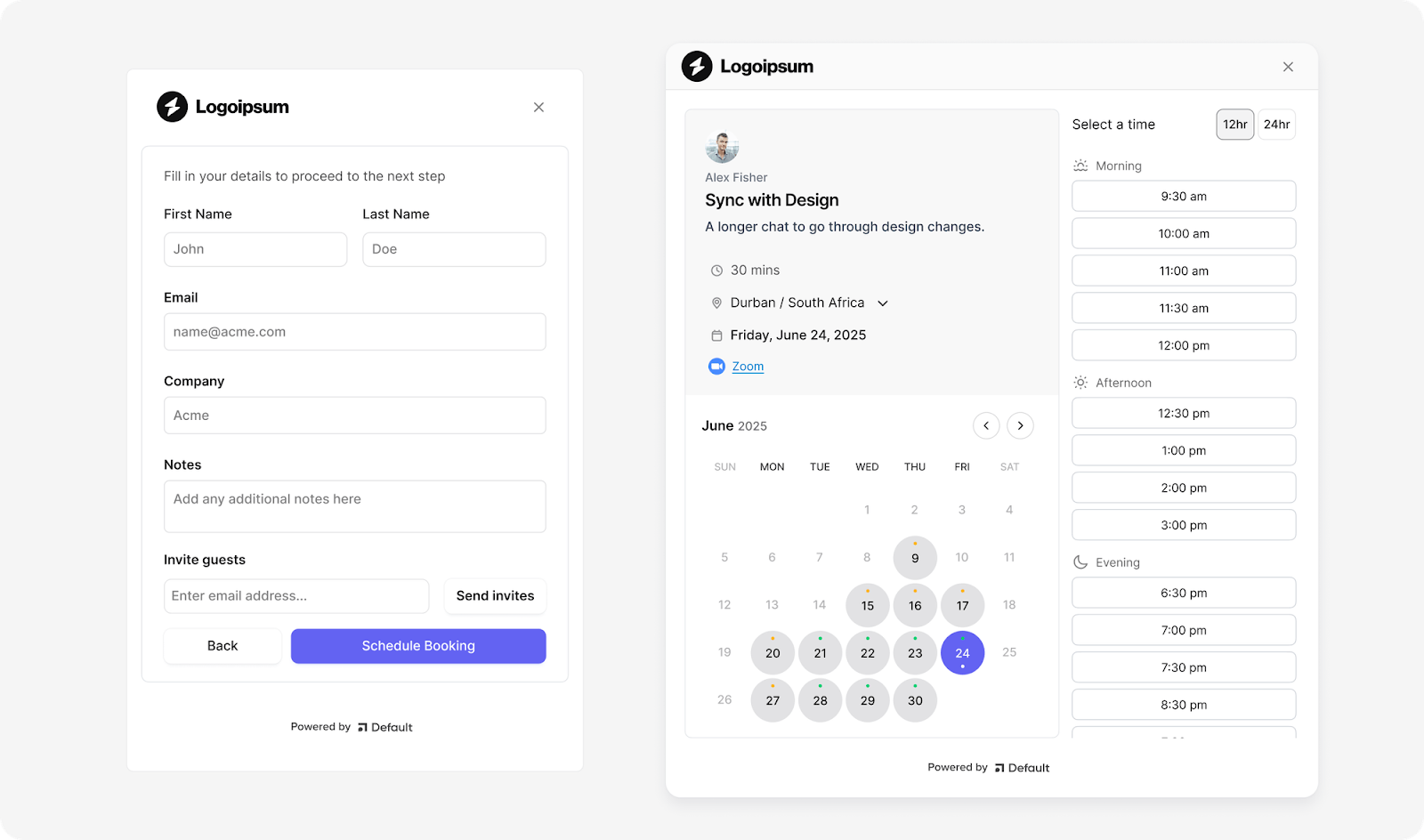
Default goes beyond embedded calendars—it fully automates the handoff from qualified lead to booked meeting.
- Let prospects self-book directly from forms (no rep action needed)
- Enforce ownership rules, round-robin logic, or territory-based assignment
- Auto-sync with Google or Outlook calendars to show real-time rep availability
- Push scheduling data straight into your CRM and workflows—no sync lag, no context loss
If you’re using Chili Piper just for speed-to-lead, Default makes it redundant.
Smart enrichment and CRM-ready data hygiene
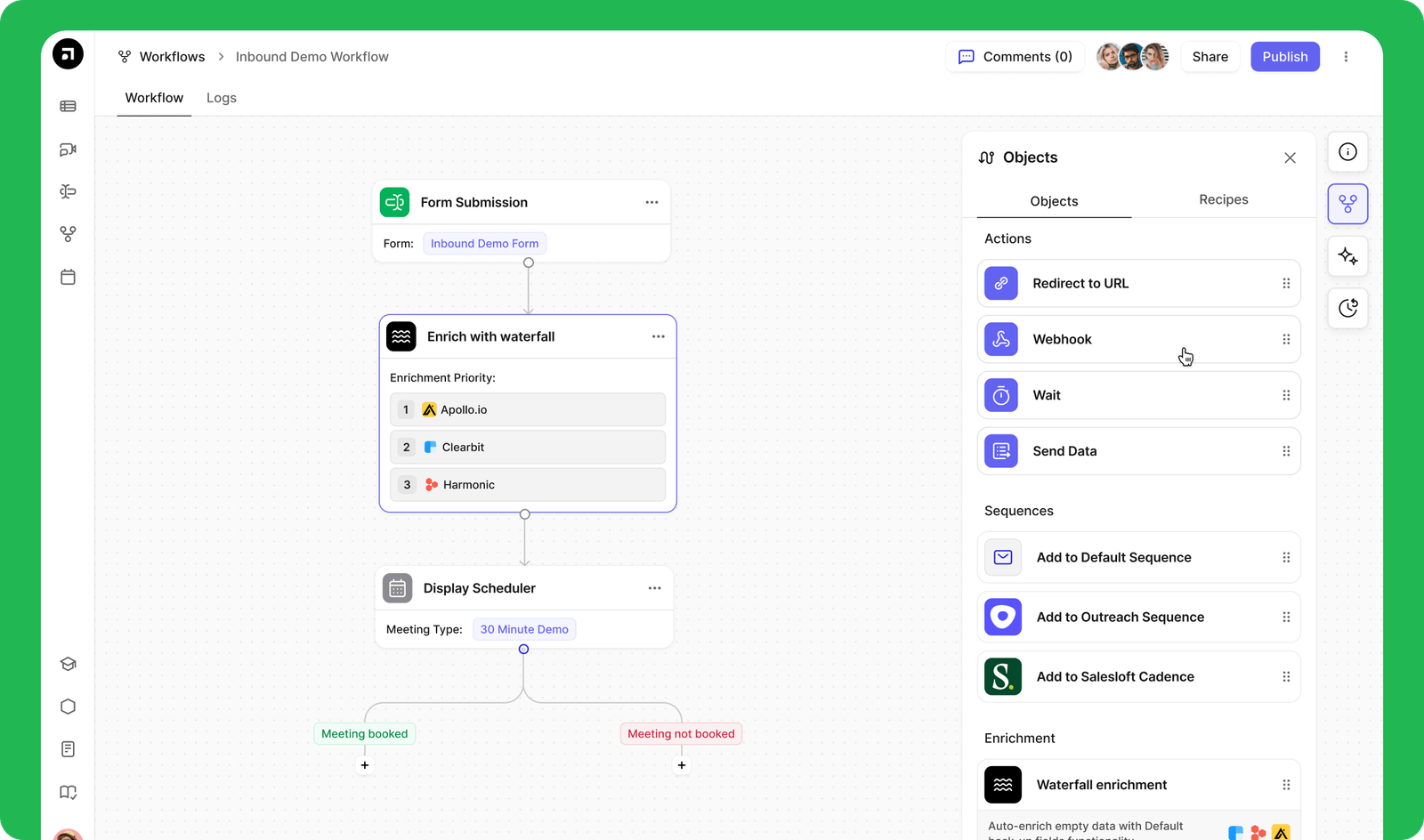
Default ensures every lead that hits your CRM is clean, enriched, and ready for follow-up.
- Enrich records using multiple providers with waterfall and fallback logic
- Auto-dedupe entries by contact or company to prevent misrouting or double attribution
- Apply overwrite controls to protect key fields from bad data
- Deliver a fully qualified record into Salesforce or Attio—on the first pass
No more bloated CRMs. No more mystery leads. Just sales-ready data from day one.
Pricing
Default offers transparent, usage-based pricing designed to scale with your team’s needs. Each plan includes a platform fee (Growth or Scale) and a license fee (charged only for users who receive meetings, are assigned as owners in the CRM, or are referenced in workflows). All editor seats are free. Below is a concise breakdown of Default’s current pricing tiers:
Where Default shines
- True GTM orchestration: Default replaces multiple point solutions with one unified system—covering enrichment, routing, scheduling, and CRM updates from a single workflow.
- Operator-friendly UX: Built for RevOps teams, not developers. Workflows are fully visual, auditable, and editable in minutes—no code, no custom scripts, no engineering cycles.
- Fast implementation, real ROI: Most teams are live within a week. Out-of-the-box templates and Slack-based support mean you’re optimizing GTM ops on day one, not month three.
Where Default falls short
- Not built for SMBs: Default is designed for teams with defined GTM workflows and real routing complexity. Small teams with minimal lead volume may find it more than they need.
- Requires clean CRM foundation: Default assumes a structured Salesforce or Attio setup. If your CRM is a mess, you’ll need to stabilize it first to get full value.
Customer reviews
“Our entire inbound engine runs on default.com, and we can't seem to imagine why anyone would not use this as a core tool in the marketing/sales stack! The product fixes every possible problem you could imagine when handling inbounds - be it qualification, routing or tracking. What used to take us hours in our inbound management process, now takes us seconds to achieve :)” - Pankaj S., verified G2 reviewer
“We use Default to route new product qualified leads to our sales team. We were able to migrate all lead routing workflows off of Zapier over to Default in a matter of hours.”- verified G2 reviewer
“Really easy to set up an inbound lead workflow. Default allows you to route leads based on form input and enrichment by other tools like Clearbit and Apollo. Follow-up mails, notification and CRM integrations mean that we no longer need to stitch 5 tools together to get the job done.” - Jules J., verified G2 reviewer
Who Default is best for
- RevOps leaders at high-growth companies: You’re managing complex lead flows, owning pipeline infrastructure, and need an orchestration layer that scales with your GTM motion.
- Sales Ops teams supporting large SDR/AE orgs: You’re coordinating calendars, territories, and SLAs—Default eliminates handoff errors and automates lead ownership logic.
- GTM operators replacing legacy routing tools: You want a visual, no-code alternative to brittle Salesforce flows or clunky point solutions like LeanData.
Apollo: Best for outbound prospecting at scale

Apollo is a go-to platform for sales teams focused on outbound motion. It combines a massive B2B contact database with built-in sequencing, making it easy to go from lead sourcing to multichannel outreach in one workflow. For SDR-first orgs that need volume and velocity, it’s a solid weapon in the outbound stack.
Key features
- Contact database: 275M+ verified contacts with filters for intent, technographics, and buyer signals
- Built-in sequencer: Automate multi-step email and call sequences directly in-platform
- Engagement analytics: Real-time tracking on open, click, and reply rates to optimize messaging
Pricing
Where Apollo shines
- Full-stack for outbound: Source, enrich, and contact leads in one tool
- High-volume outreach: Designed for teams that prioritize activity-based selling
- Affordable entry point: Strong free plan and competitive pricing for early-stage teams
Where Apollo falls short
- Limited for inbound workflows: Not built for lead routing, CRM enrichment, or inbound meeting scheduling
- Data accuracy can vary: Like many B2B databases, enrichment quality depends on segment
- No orchestration layer: You’ll still need additional tools to manage handoffs or CRM updates
Customer reviews
“ I love how it consolidates all of my outreach efforts into one place - from prospecting to emails and cold calls. Apollo makes it easy to personalize outreach, batch prospects, and keep track of my outreach efforts.” - Ashlie C., verified G2 reviewer
“Apollo is confused and a bit of a mess. They don't particularly do one thing well. They have potential but right now the UI and the products they offer is unclear as they are trying to be everything and good at nothing. I came for the data I left because of the mess.” - verified G2 reviewer
Who Apollo is best for
- Outbound-focused SDR teams: Prospecting-first orgs that want to scale cold outreach without stitching together five different tools
Chili Piper: Best for speed-to-lead scheduling
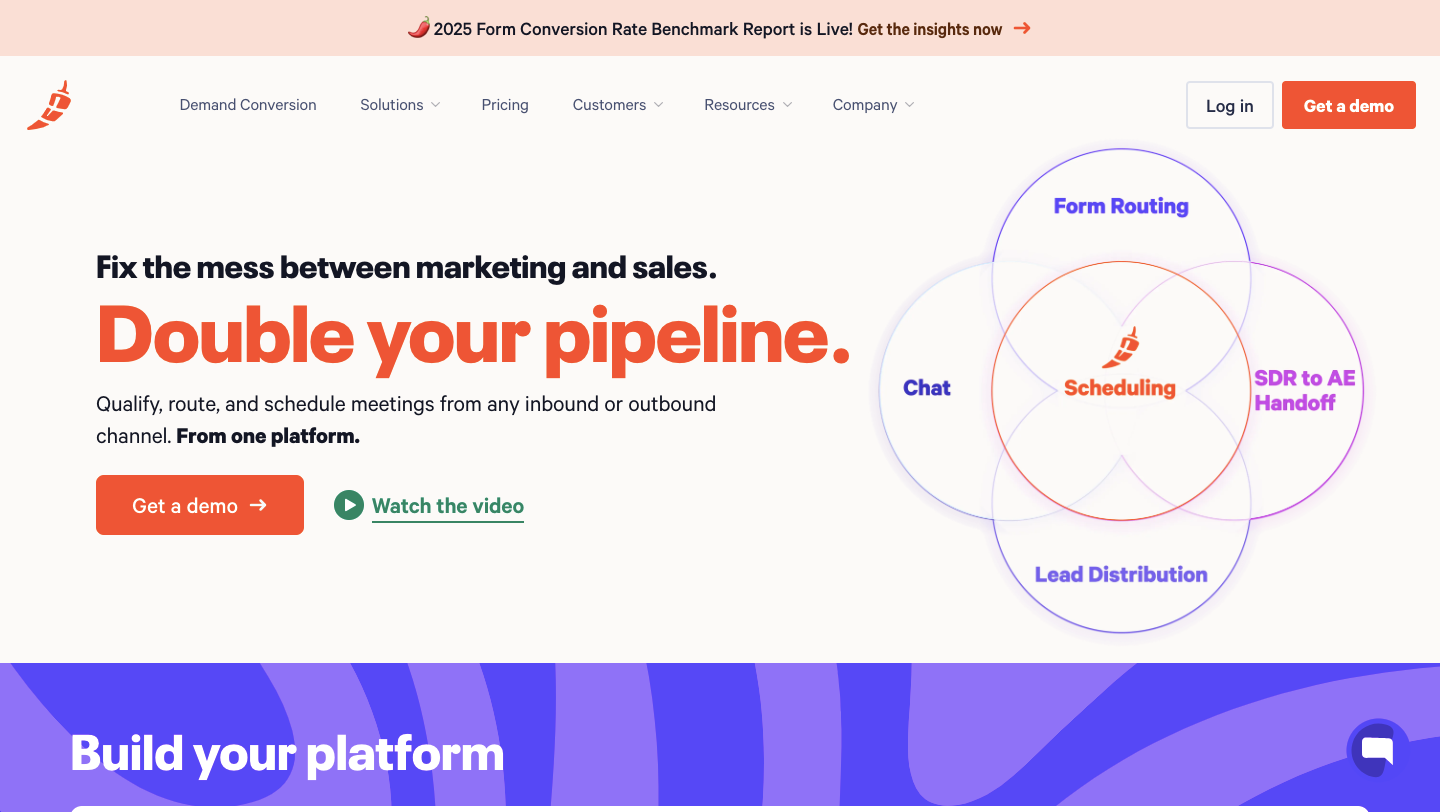
Chili Piper accelerates speed-to-lead by letting qualified buyers instantly book meetings with the right rep. It plugs into your web forms, checks ownership rules, and surfaces only available times, cutting out the usual back-and-forth and helping inbound teams capitalize on buyer intent in real time.
Key features
- Form-based routing: Book meetings directly from lead capture forms with dynamic rep assignment
- Calendar integration: Syncs with Google or Outlook to show real-time rep availability
- Smart rules engine: Enforces ownership, round-robin logic, or territory rules to avoid lead conflicts
Pricing
Chili Piper’s pricing is divided into two separate structures depending on whether you use Salesforce CRM or HubSpot CRM. Let’s have a look.
Salesforce CRM
HubSpot CRM
Note: All plans require an additional platform fee based on your monthly inbound volume (ranges from $225–$1,500+/month). If you bundle two or more products, you pay only one platform fee rather than multiple fees.
Where Chili Piper shines
- Speed-to-meeting conversion: Ideal for teams focused on capitalizing on inbound intent
- Form-based intelligence: Handles real-time routing without engineering work
- Lightweight implementation: Easy to stand up for inbound-focused GTM motions
Where Chili Piper falls short
- Limited beyond scheduling: Doesn’t handle lead enrichment, workflow logic, or CRM sync
- Less suitable for complex routing needs: Lacks visual logic builder for advanced GTM ops
- Integrations can be rigid: Some setups may require engineering workarounds
Customer reviews
“It's very easy to customize your settings to specify exactly how you want your meeting invites to look. I really do like the calendar integrations as well so you can share it with anyone even those outside your org. It makes it a lot easier to schedule.” - Christopher H., verified G2 reviewer
“The UI where you maintain your queues and other settings is really complex, and sometimes it feels that you need to do the same tasks in so many places to get things done. The UI lacks a "save" button, and action history, so in a case of a human error, the troubleshooting takes ages.” - Senni N., verified G2 reviewer
Who Chili Piper is best for
- Inbound-heavy GTM teams: Especially those prioritizing fast follow-up and booking demo-ready leads the moment they convert
Gong: Best for sales performance & forecast visibility
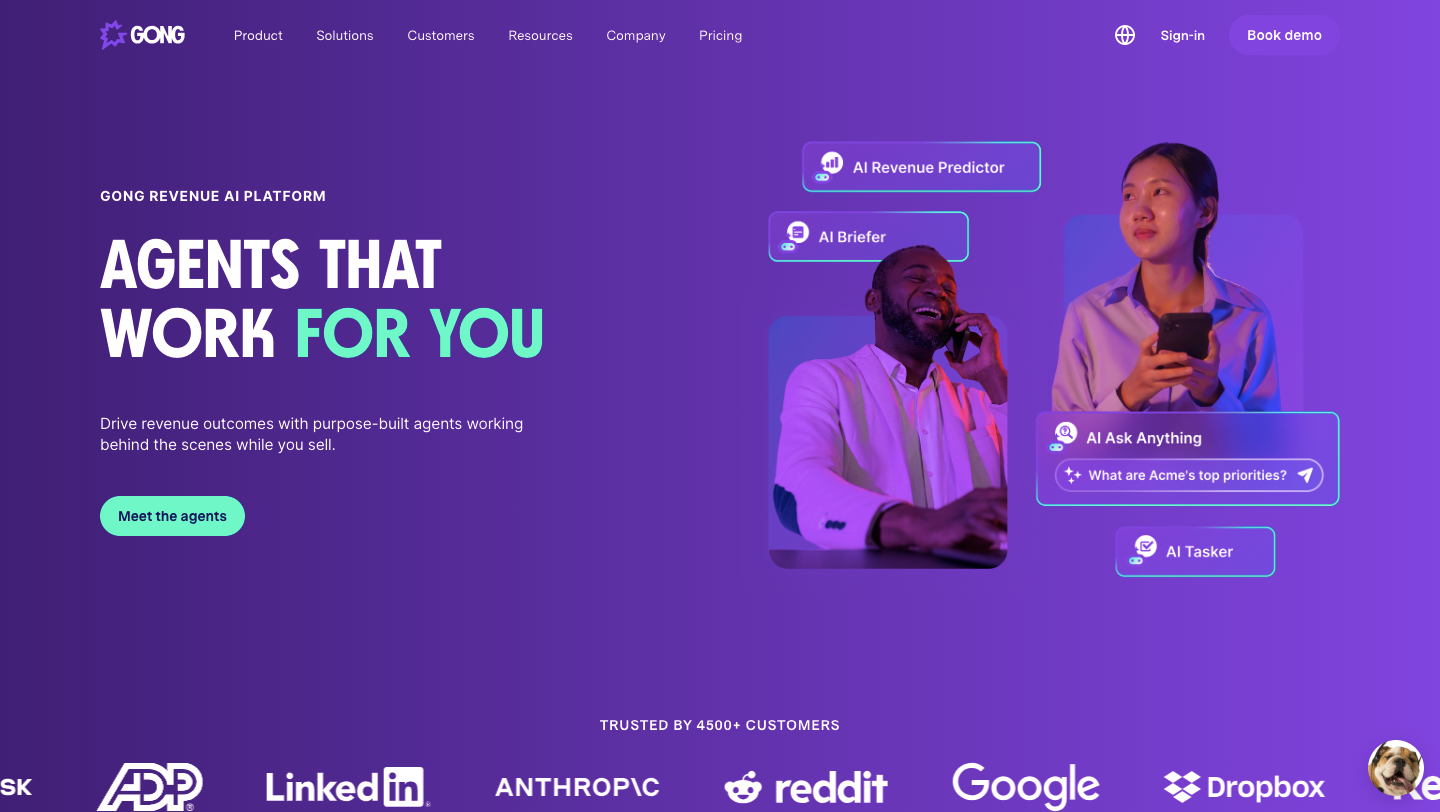
Gong captures, transcribes, and analyzes sales conversations to give GTM teams full visibility into pipeline health, rep performance, and deal risks. It’s designed for leaders who want to coach smarter, forecast more accurately, and understand exactly why deals are won—or lost.
Key features
- Conversation intelligence: Records and analyzes calls, emails, and meetings to surface trends and risks
- Deal boards: Real-time pipeline views that highlight stuck deals, ghosted buyers, and rep follow-up gaps
- Forecasting tools: Pulls activity data into AI-generated forecast models for more accurate projections
Pricing
Gong integrates freely with your existing tech stack (CRM, communication tools, etc.)—no extra fees for connectors or data sync.
Where Gong shines
- Conversation insights at scale: Tracks patterns across thousands of calls to surface coaching opportunities
- Pipeline risk detection: Helps RevOps and sales leaders spot deals slipping through the cracks
- Forecast confidence: AI-assisted projections built from rep behavior and deal activity
Where Gong falls short
- Not a sales engagement platform: No sequencing, routing, or CRM enrichment
- Implementation can be heavy: Setup requires integration with multiple systems and upfront calibration
- More value for larger teams: Best leveraged by orgs with multiple reps and a layered sales process optimization.
Customer reviews
“I like that Gong shares my follow-up actions, a summary of the notes for the call & that at any point I can go back to the recording and use the AI feature to find certain parts of the conversation that I need access to.” - Sophie A., verified G2 reviewer
“The transcript isn't very accurate and based on that we get a scoring which shouldn't happen as the more than half of the data incorrect” - Komal P., verified G2 reviewer
Who Gong is best for
- Sales leaders & enablement teams: Focused on optimizing performance, improving win rates, and bringing visibility to pipeline health at scale
Outreach: Best for multichannel sales engagement & pipeline execution
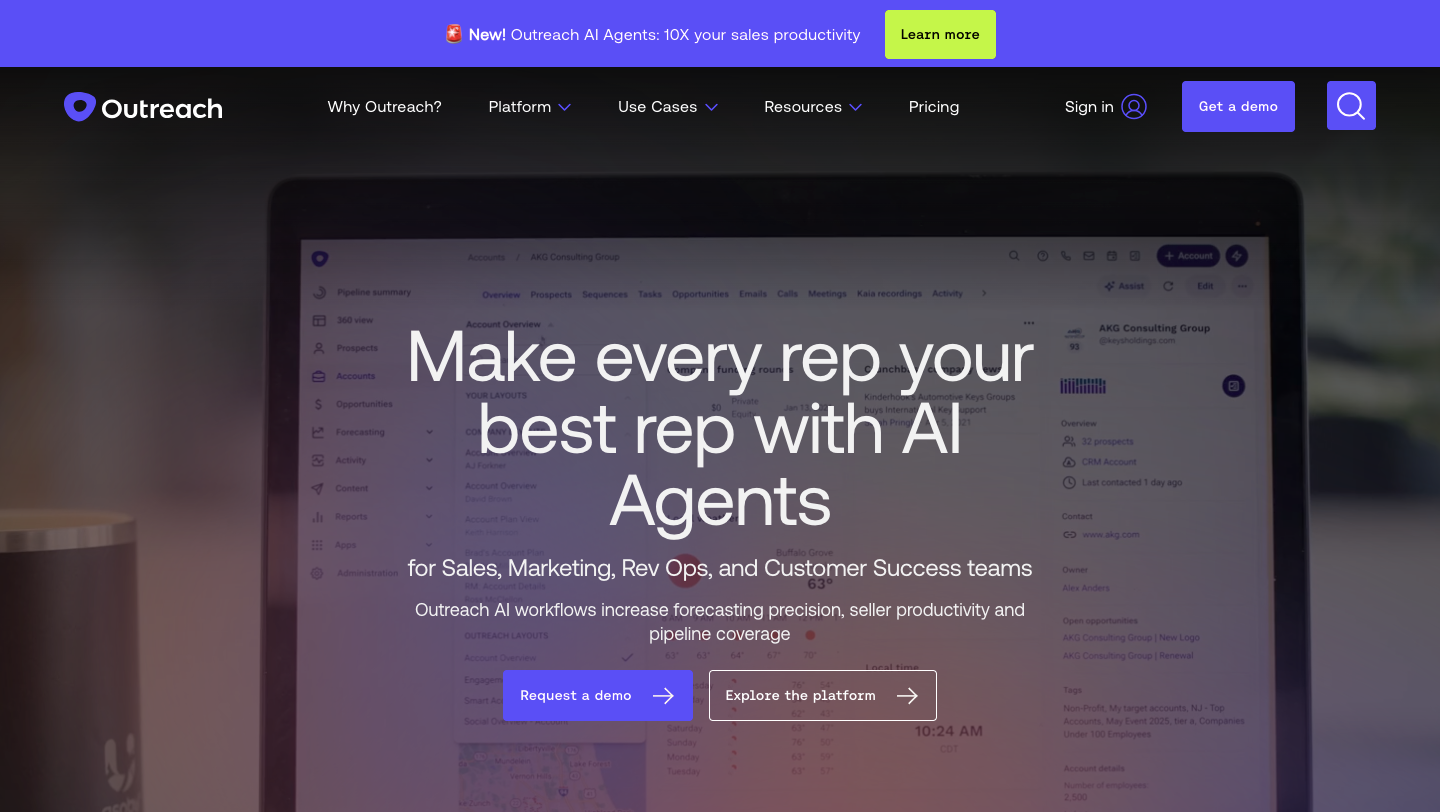
Outreach is a sales engagement platform built for scaling outbound and managing pipeline execution at the rep level. It automates email, call, and task sequences while providing managers with granular insights into activity, conversions, and deal progress.
Key features
- Sequencing engine: Automate multistep workflows across email, calls, LinkedIn, and custom tasks
- Pipeline management: Visual dashboards to track deals, activity, and rep performance in real time
- Buyer sentiment analysis: AI analyzes engagement to predict which deals are heating up—or at risk
Pricing
Where Outreach shines
- Process-driven outbound: Ideal for orgs that rely on sequenced, repeatable plays
- Manager visibility: Deep analytics for coaching, tracking, and performance reporting
- Multichannel flexibility: Combines calls, emails, and social into one unified workflow
Where Outreach falls short
- Not an orchestration layer: Outreach handles engagement—not enrichment, routing, or post-lead workflows
- Implementation complexity: Larger orgs may need RevOps or sales enablement to manage integrations and workflows
- Premium pricing: High per-seat cost can add up quickly for larger teams
Customer reviews
“I love the tracking it has on contacts, the quick ability to upload and add them to a sequence to ensure you hit them with a phone call, email or LinkedIn message..” - Jack O., verified G2 reviewer
“It tends to freeze up often and disrupt the flow of the end user's day. Often needing to be hard refreshed before resuming activities and even needing to restart hardware to get it going again.” - Kristin M., verified G2 reviewer
Who Outreach is best for
- Process-led sales teams: Especially those focused on repeatable outbound plays and pipeline visibility across multiple touchpoints
ZoomInfo: Best for enterprise data sourcing

ZoomInfo is a comprehensive data provider for B2B teams focused on precision targeting. Its SalesOS platform offers access to deep contact, firmographic, technographic, and intent data—enabling rich segmentation for outbound and ABM programs. Teams can trigger alerts based on buying signals, enrich CRM records, and integrate with downstream tools.
While powerful for list-building and prospect discovery, ZoomInfo operates upstream from GTM workflows. It stops short of handling routing, enrichment orchestration, or real-time handoff logic—making it best suited as a data layer alongside more agile execution tools like Default.
Salesloft: Best for pipeline cadence management

Salesloft helps sales teams manage and execute structured outreach cadences across email, phone, and social. Its sequencing engine and conversation intelligence tools support guided selling for AEs handling mid-funnel deals. Managers benefit from built-in coaching and performance analytics.
However, Salesloft operates at the rep level—not across the broader lead-to-revenue funnel. It lacks the orchestration needed to manage handoffs, enforce routing rules, or cleanly integrate scheduling and enrichment logic. For teams needing unified GTM workflows—not just engagement sequences—Salesloft works best as a layer, not the system of record.
HubSpot: Best for SMB all-in-one GTM
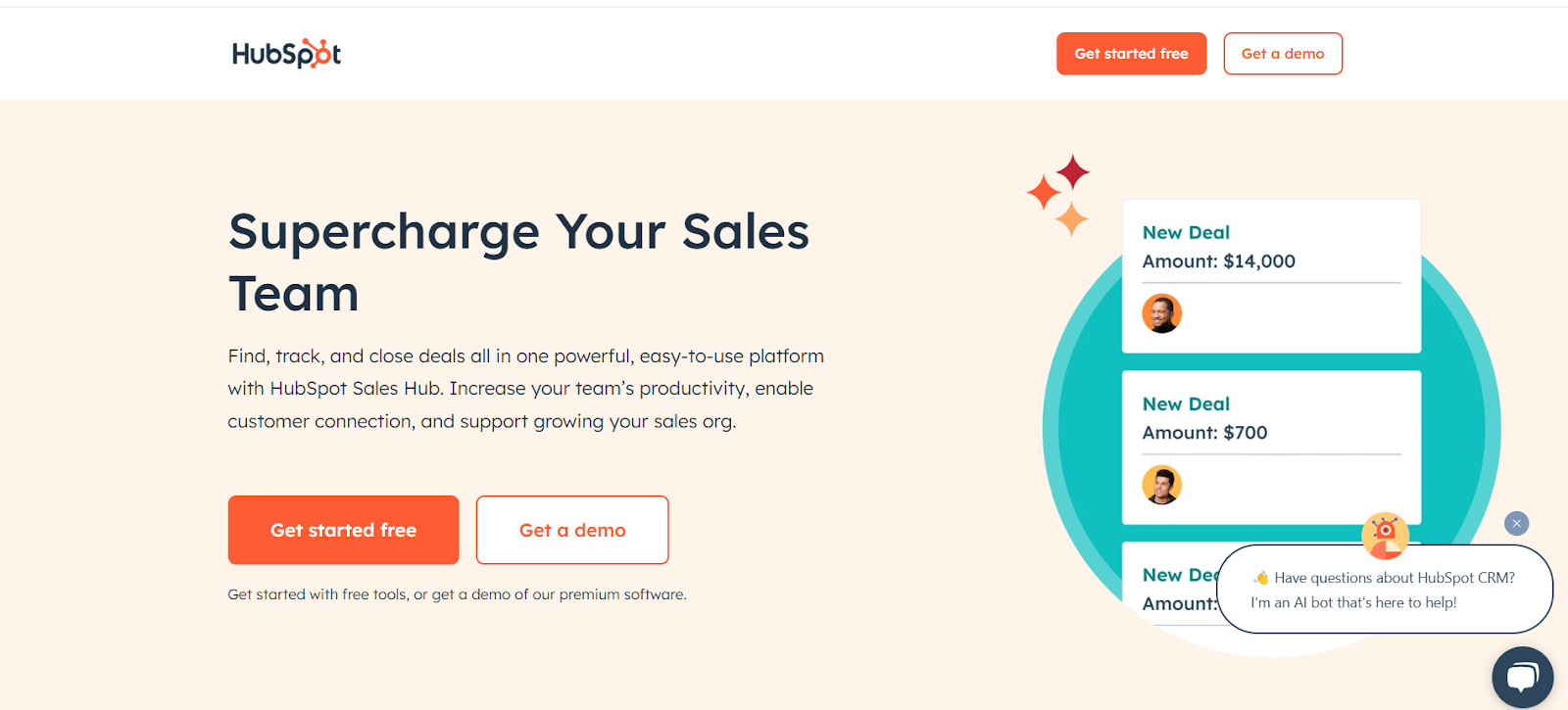
HubSpot combines CRM, marketing automation, sales engagement, and support in a single, user-friendly platform. It’s ideal for SMBs looking to unify core GTM motions without custom integrations or heavy ops lift. Out-of-the-box templates and free tools lower the barrier to entry.
But HubSpot’s automation and lead routing logic are limited for complex GTM setups. As teams scale and workflows evolve, ops often hit walls around routing precision, fallback rules, or cross-team ownership logic. HubSpot centralizes data, but lacks the orchestration engine Default provides for high-velocity GTM operations.
LeanData: Best for legacy lead routing in salesforce
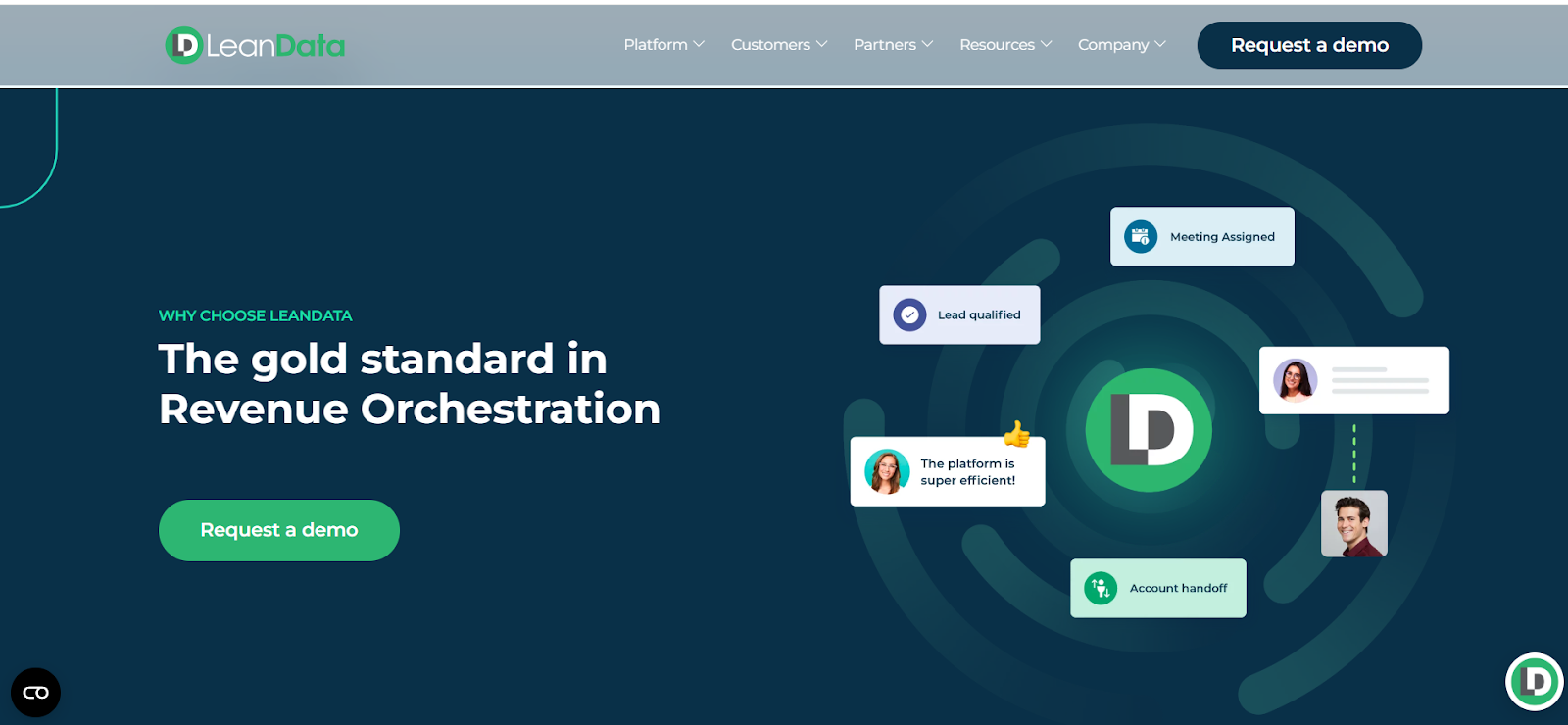
LeanData is a Salesforce-native routing and matching solution used by enterprise teams to assign leads, contacts, and accounts using complex rule logic. It’s robust and configurable—ideal for large orgs with embedded Salesforce workflows.
That said, LeanData often requires admin-level resources to manage and update flows. Visual transparency is limited, and iteration speed can be slow. For modern RevOps teams seeking fast, no-code routing control, LeanData feels rigid by comparison. Default offers the same assignment precision—but with real-time orchestration, visual logic, and self-serve workflow ownership.
How to choose your sales tech stack
The right sales tech stack isn’t about having more tools—it’s about deploying the right ones for the workflows that move revenue. Here’s how high-performing GTM teams evaluate what stays, what goes, and where orchestration matters most.
#1: Lead routing flexibility
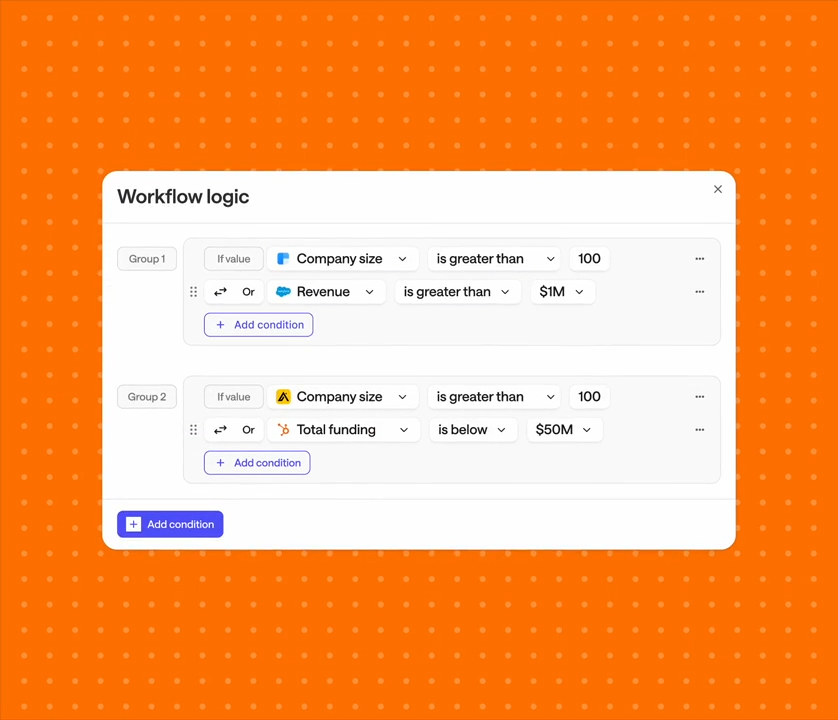
Your routing logic needs to evolve with your GTM strategy—territories shift, ownership changes, and product lines grow. Hardcoded workflows and black-box automations slow you down.
Look for a platform that gives RevOps full visibility and control over routing logic—ideally with a visual, no-code interface that supports A/B testing, fallback logic, and owner overrides.
Default makes this easy with its drag-and-drop workflow builder—enabling real-time updates and auditability without engineering overhead.
#2: Speed-to-lead execution

Every minute a qualified lead waits is pipeline lost. Whether it's a demo request, form fill, or pricing-page hand-raiser, your stack needs to reduce time-to-meeting—not just capture the lead.
Look for tools that integrate scheduling directly into your lead flow, auto-assign reps based on routing logic, and update your CRM in real time. This ensures no rep delay, no manual handoffs, and no lost revenue.
Default embeds scheduling directly into forms and routes leads instantly—cutting speed-to-lead time from hours to seconds.
#3: CRM Hygiene & data consistency
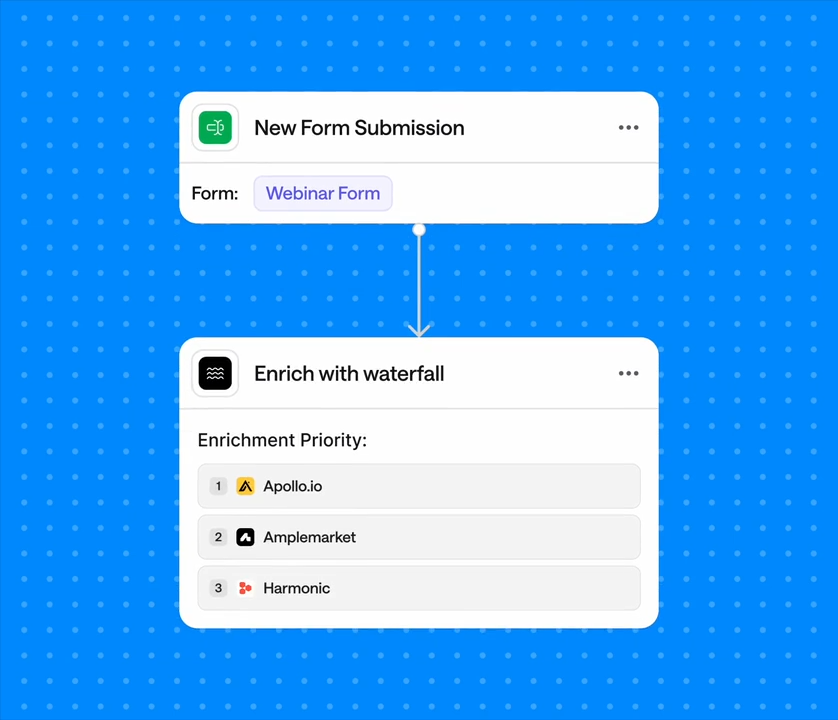
Bad data breaks GTM workflows. Whether it’s duplicate records, incomplete enrichment, or misassigned leads—dirty CRM inputs lead to missed follow-ups, broken reports, and rep frustration.
Your tech stack should enforce clean data at the point of entry. Look for tools that de-dupe automatically, enrich from multiple sources, and sync to CRM fields without overwrites or gaps.
Default handles waterfall enrichment and deduplication before data ever reaches your CRM—so your pipeline stays clean and your reps stay focused.
#4: Workflow visibility & ops ownership
Your GTM workflows shouldn’t be buried in scripts or owned by engineering. As your go-to-market motion evolves, ops needs to iterate quickly, and with confidence.
Look for tools that offer full visibility into lead flow logic, support easy testing, and allow non-technical teams to make changes without risk.
Default gives RevOps total control: visual workflows, audit logs, and real-time simulation so you can move fast without breaking things.
How to Build a Scalable Sales Tech Stack
Scalable GTM isn’t about stacking more tools—it’s about building infrastructure that can flex with territory shifts, headcount growth, and evolving workflows. High-performing RevOps teams treat their stack like an operating system: visible, modular, and built to adapt without breaking.
Here’s how to future-proof yours.
1. Anchor to workflows, not features
Your tech stack should solve for revenue motion, not buzzword parity. That means prioritizing core flows: routing leads by territory or ownership, centralizing enrichment and scheduling, and reducing time-to-meeting.
Top Tip: Map your lead journey end-to-end. Where are handoffs failing? Where do delays creep in? These pressure points—not feature wishlists—should guide your tooling.
That’s why many ops teams use Default to handle routing, enrichment, and scheduling in a single system—with no engineering cycles or vendor sprawl.
2. Design for adaptability, not rigidity
Static systems break under scale. Hardcoded flows and script-based automations can’t keep up with shifting GTM rules. Your tools should evolve with you.
Look for:
- Visual builders for routing and logic flows
- Modular rules with fallback and override support
- CRM-native execution, not brittle middleware
Top Tip: Ask every vendor, “If I need to change this logic tomorrow, who owns it and how long does it take?” If the answer isn’t “you” and “today,” it won’t scale.
With Default, ops teams update routing rules, tweak logic, and launch new flows in hours—not weeks—using a drag-and-drop interface built for speed.
3. Consolidate what you can. Integrate what you must.
Every disconnected tool adds risk: sync delays, visibility gaps, conflicting logic. The more systems involved, the harder it is to troubleshoot when something breaks.
Whenever possible, unify lead capture, routing, enrichment, and scheduling inside a single workflow. When you must integrate, make sure data flows both ways—and that RevOps can own the full picture.
Too tip: Run an integration audit. Which tools feed your CRM? Which ones overwrite data? Which workflows depend on fragile API chains?
Default removes this guesswork by handling GTM workflows end-to-end—so you only integrate when you want to, not because your stack forces you to.
Benefits of a well-integrated sales tech stack
An integrated sales tech stack doesn’t just reduce friction—it multiplies the impact of every rep, every lead, and every dollar of pipeline. When your tools are connected, your data is clean, and your workflows are built for scale, you unlock compounding gains across every stage of the funnel.
Faster speed-to-lead = Higher conversion
Companies that respond to leads within 5 minutes are 100x more likely to connect and 21x more likely to qualify those leads compared to waiting just 30 minutes.
The problem? Most teams miss this window—not because they don’t care, but because their stack isn’t wired for it. Disconnected routing, enrichment delays, or manual scheduling steps add minutes (or hours) that kill momentum.
When a prospect submits a form or requests a demo, your stack should automatically enrich their record, assign ownership, and trigger scheduling—in real time. Integrated workflows make this seamless, so reps engage leads instantly instead of missing SLAs due to delays or handoffs.
Accurate forecasting & reporting
When systems are disconnected, even basic questions—like who owns a lead or what stage a deal is in—can become unclear. This data drift undermines forecast accuracy and erodes stakeholder trust.
Integrated tools eliminate those blind spots. When every lead action, update, and engagement is synced in real time to your CRM, you get cleaner attribution, tighter pipeline visibility, and more reliable forecasts.
Operational efficiency at scale
The more tools in your stack, the more time reps spend navigating between them—and the less time they spend selling. While exact numbers vary by industry, studies consistently show that a majority of sales reps spend less than one-third of their time on actual selling activities.
An integrated stack streamlines workflows across enrichment, routing, and scheduling. It reduces duplication, manual entry, and system-switching—freeing up your team to focus on high-value work instead of backend busywork.
Where sales tech is headed next
The next generation of sales tech won’t be defined by more tools—but by smarter systems. As machine learning reshapes buyer engagement and data privacy becomes a competitive concern, RevOps teams are under pressure to build stacks that are both intelligent and accountable.
Here’s what’s coming next—and what to prepare for now.
Predictive GTM orchestration (AI moves beyond enablement)
AI and machine learning are no longer just assisting reps—they’re reshaping the process itself. From dynamic lead scoring to auto-prioritized pipelines, the future stack will predict where to focus and trigger next steps autonomously.
We’re seeing early moves already: AI surfacing buyer risk (Gong), suggesting deal tactics (Salesforce), or dynamically assigning leads based on intent and fit (Default).
What’s next? Machine-led workflows that adapt in real time to behavior, velocity, and outcomes—without ops manually rebuilding the logic behind them.
Privacy-first architecture as default
Compliance isn’t a checkbox anymore—it’s a design principle. As GDPR, CCPA, and SOC 2 become the baseline, future stacks will need to enforce consent, field-level sync control, and auditability natively.
Rather than cleaning up after the fact, systems will proactively block unauthorized writes, auto-flag PII mismatches, and require explicit permissions across integrations.
Stacks that can't prove data integrity won’t just slow down legal—they’ll lose buyer trust. This shift puts pressure on RevOps to choose platforms with compliance embedded at the workflow level.
Unified buyer intelligence (from fragmented fields to dynamic identity)
Today’s GTM data is split across tools—intent signals, firmographics, and product usage live in silos. The next wave of stacks will unify those into a single, evolving profile that drives automated logic across systems.
Expect lead scoring to give way to adaptive qualification—where buyer behavior (not static rules) determines rep priority, routing paths, and sequence personalization. This isn’t just about data visibility—it’s about triggering the right action, in the right moment, based on one view of the buyer.
Real-time, modular systems replace brittle integration chains
Gone are the days of hardcoded routing and delayed webhook triggers. Future stacks will prioritize real-time logic execution within modular, API-first systems that scale with your motion, not fight it.
Think: dynamic rules that fire on conversion, with no delay; enrichment waterfalls that run before records hit the CRM; routing logic you can A/B test without writing code.
Tools like Default are already building this infrastructure—letting RevOps teams orchestrate GTM flows visually, audit changes instantly, and deploy across business units in hours.
These trends point to a clear shift: RevOps is no longer just managing tech—it’s architecting systems that can scale, self-adjust, and stay compliant by design. The next wave of GTM leaders won’t just buy tools. They’ll build stacks that think, adapt, and accelerate revenue in real time.
Build a smarter, faster sales stack with Default
Choosing the right sales tech stack isn’t about collecting features—it’s about building a system that drives revenue, scales with your GTM motion, and lets your team operate at full speed.
Default puts RevOps in control—routing, enrichment, and scheduling, all in one no-code platform. Whether you're managing complex inbound flows or scaling across teams, Default gives you the infrastructure to move fast and stay aligned.
Ready to run your GTM motion like product teams run code—structured, intelligent, and built to scale? Default was built for that.
Book a demo to see how Default can streamline your stack and accelerate revenue.
Conclusion

Former pro Olympic athlete turned growth marketer. Previously worked at Chili Piper and co-founded my own company before joining Default two years ago.
Run revenue as an engineered system
Revamp inbound with easier routing, actionable intent, and faster scheduling








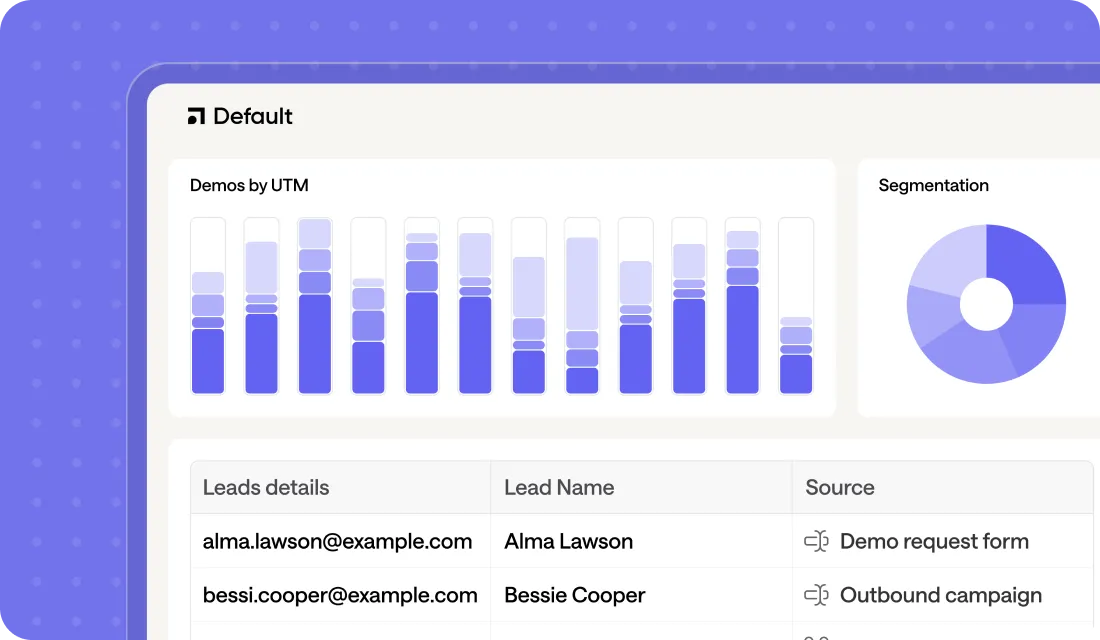
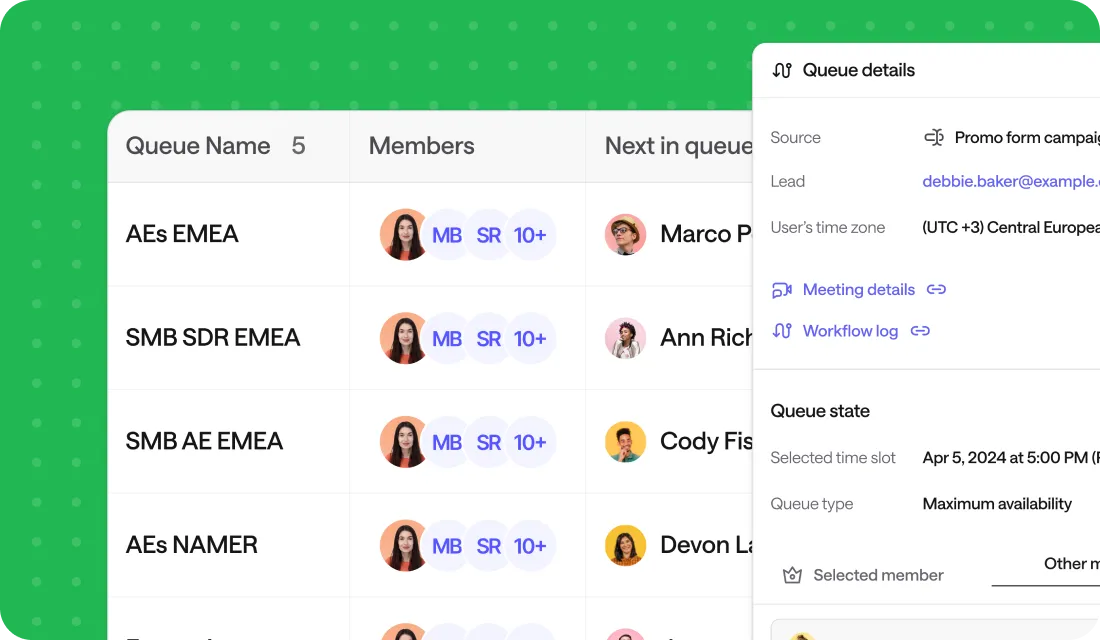




.png)
























